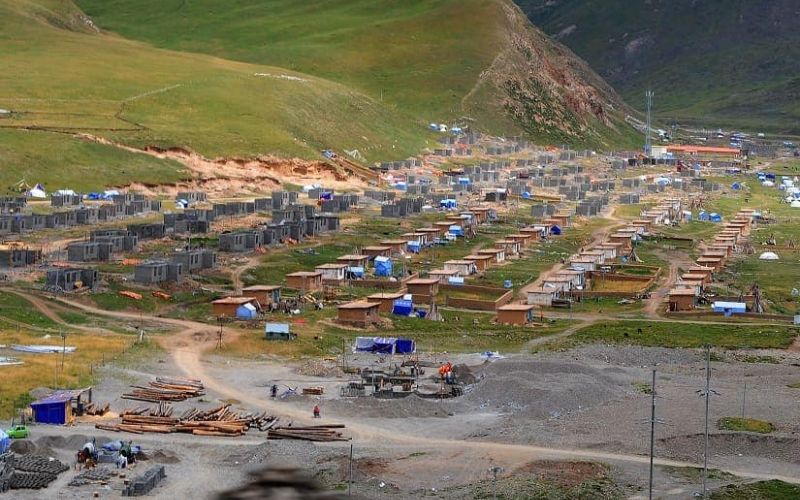
The news report highlighted the resettlement of Tibetan villagers from Jigkyob village in Tibet to a lower altitude settlement, portraying the move as an initiative to provide improved living conditions, public services, and a promising future.
The relocation will disrupt the traditional lifestyle and livelihoods of Tibetan nomads, who have historically relied on animal husbandry. Moving to lower altitudes could sever their connection to ancestral lands and disrupt their cultural practices.
Numerous reports from various sources, including human rights organizations and local testimonies, highlight instances where such resettlements are not voluntary but forced by the Chinese government. The relocation might be portrayed as a positive development, but it could be against the will of the villagers, impacting their cultural heritage and way of life.
In some instances, relocation initiatives have been criticized for coercing residents to move against their will. The report lacks information about the villagers' consent and whether they had a genuine say in the relocation decision.
Reports by popular news outlet like Reuters and BBC shed light on the coercive nature of such resettlement programs, indicating that these might be part of larger political strategies aimed at exerting control over ethnic minority regions, raising concerns about human rights violations.
The article titled "Relocation and Resettlement of Tibetan Nomads" emphasizes the adverse impact of forced relocations on the traditional Tibetan nomadic way of life. It underscores how such initiatives often disrupt cultural heritage and the livelihoods of indigenous communities, undermining their autonomy and heritage.
Underreported and overlooked, the plight of Tibetan nomads remains a tragic chapter in China’s occupation of Tibet. This mass resettlement, part of China's broader policy to Sinicize Tibetan culture, has unleashed a wave of human rights abuses and cultural erosion that cannot be ignored.
These nomads, known as Drokpa herders, have thrived for over 8,000 years by harmonizing with nature. Yet, in a sweeping move, the Chinese Communist Party (CCP) has imposed a series of coercive policies, compelling nomads into urban areas. The reasons cited range from claims of ecological damage due to nomadic grazing practices to purported efforts to elevate the nomads from poverty to prosperity.
However, the reality belies these justifications. The forced relocation has left the nomads struggling in remote urban corners, devoid of their herds and livelihoods. They are subjected to political indoctrination, surveillance, and ideological re-education, while their ties to their cultural roots weaken within the confines of concrete dwellings.
The irony lies in the fact that the nomads, historically labeled as environmental threats, have actually been effective land managers, fostering biodiversity and sustainable practices. Their rotational grazing patterns have revitalized grasslands and supported the delicate Tibetan ecosystem for millennia. Yet, China's narrative portrays them as 'ecological migrants,' conveniently ignoring their historical role in conservation.
To gain a comprehensive understanding of the situation, it's crucial to consider a variety of perspectives, including those of the relocated villagers, independent experts, and human rights organizations, to assess the full implications of such relocation projects on the Tibetan community and their rights.
Edited and collated by Team TRC